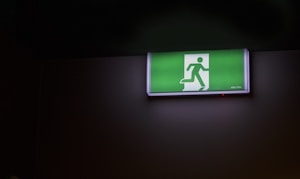How footfall management is changing the footprint of building design
Workspace and desk optimisation have become significant concerns for organisations of every shape and size: from global corporations and fast-growth SMEs right through to small, local businesses with a minimal office footprint.
Understanding how a building is used is key to optimising its performance, especially in the wake of increased hygiene and safety measures required as part of a new Covid-safe regime. Social distancing and increased working from home have led to a fundamental re-think about the role of corporate office buildings; space is no longer used in the same way and in some cases, not used at all

Measuring is the new norm
In the same way that website data can be collected to show the number of unique and repeat visitors, so too can footfall data. From cameras and sensors to sophisticated scanning technology, a host of innovative new tech is now available to measure occupancy and provide analysis on the results. A data-driven approach to decisions is key to ensure the most effective and cost-efficient approach to building management is adopted.
Understanding the number of people entering an area or utilising specific space can help inform numerous facilities management activities. Cleaning schedules and security rotas can be designed on not just planned or anticipated occupancy numbers but also real-time data showing which specific rooms or areas of a building have been used and which haven’t. Office fixtures and fittings, including desk furniture, can be tailored to meet the needs of those using the space based on factual data. Critically, space can also be repurposed or redesigned when the data shows it’s not being utilised as intended.

Real-time analytics
There is a range of approaches that can be adopted to fully measure and understand building occupancy, all with their own suite of business intelligence analytics and reporting capability. Traditional video can track people’s movement whilst the addition of facial recognition capability means individual movement can be captured and tracked. ID card systems allow data to be captured around space usage, however more advanced systems that include sensors or tracking capability offer even more insight as to individual and holistic movement within a building environment.
The recent global health crisis has driven further innovation in this space to support the capture of health-related data or to support a more Covid-safe environment. Thermal imaging can recognise when an individual with a high temperature is present while alert systems installed at a building entrance can ensure the maximum desired occupants of a space is not exceeded by signalling when it is safe, or not safe, to enter.

A more flexible future
Knowing the true usage of a space can also be a key efficiency driver. Now more than ever, office space is being used differently as workers and their employers understand the long-term implications of changes to working practices. Office space will increasingly be used for collaboration and meetings rather than a 9 am – 5 pm base location. This means that entire sections of a building, and even whole floors may never be used in the same way again. If these areas are being treated as though they are being used daily, with light, heat and ongoing cleaning taking place, then footfall data can support a business case to repurpose the space. It could also support landlord discussions about a company’s wider footprint within the building, with perhaps more flexible solutions needed going forward as businesses and building owners gets to grips with a new and more flexible way of working.
Footfall counting technology is more than just understanding who is entering and leaving a building or space. From heat-map sensors that show where individuals go in an office through to facial profiling that can highlight employee behaviours, proactive occupancy management can help drive more strategic decision making to fully optimise building performance.

Energy – If You Can’t Measure it, You Can’t Manage it!
Before you embark on a major project to reduce energy consumption, do you know where you currently use energy? That is the vital starting point, as RFM’s Client Services Director Mark Flanagan explains.



















